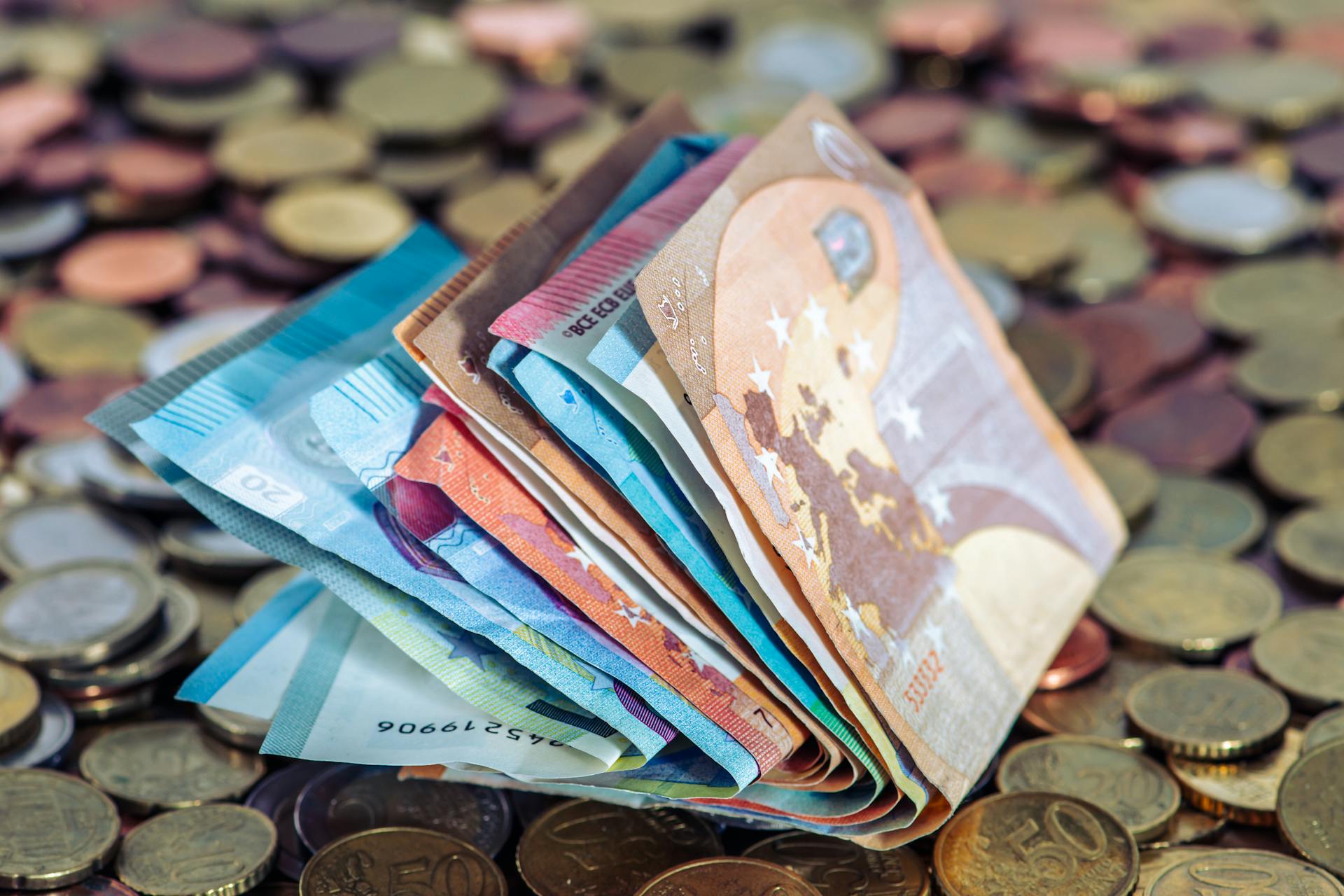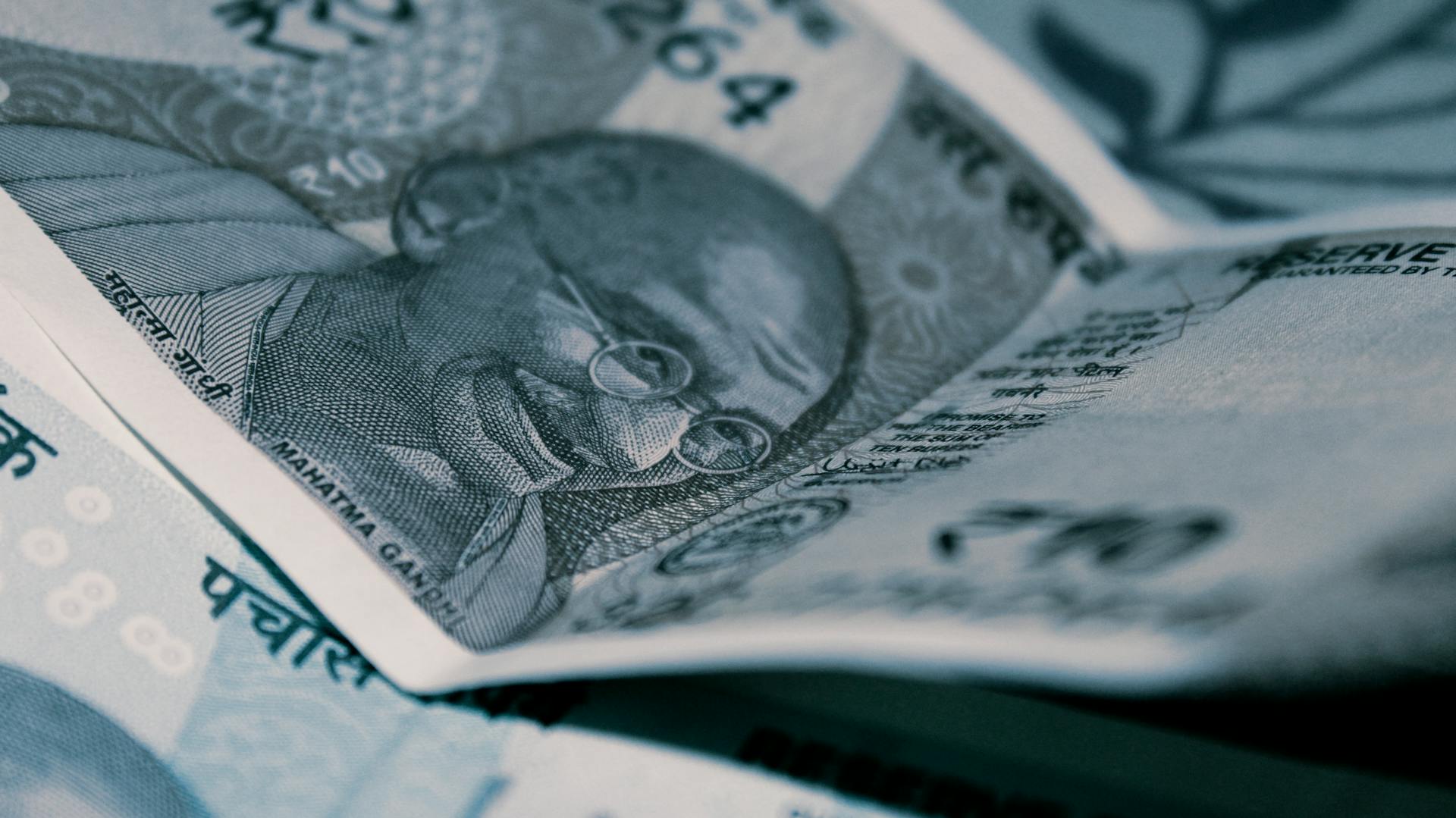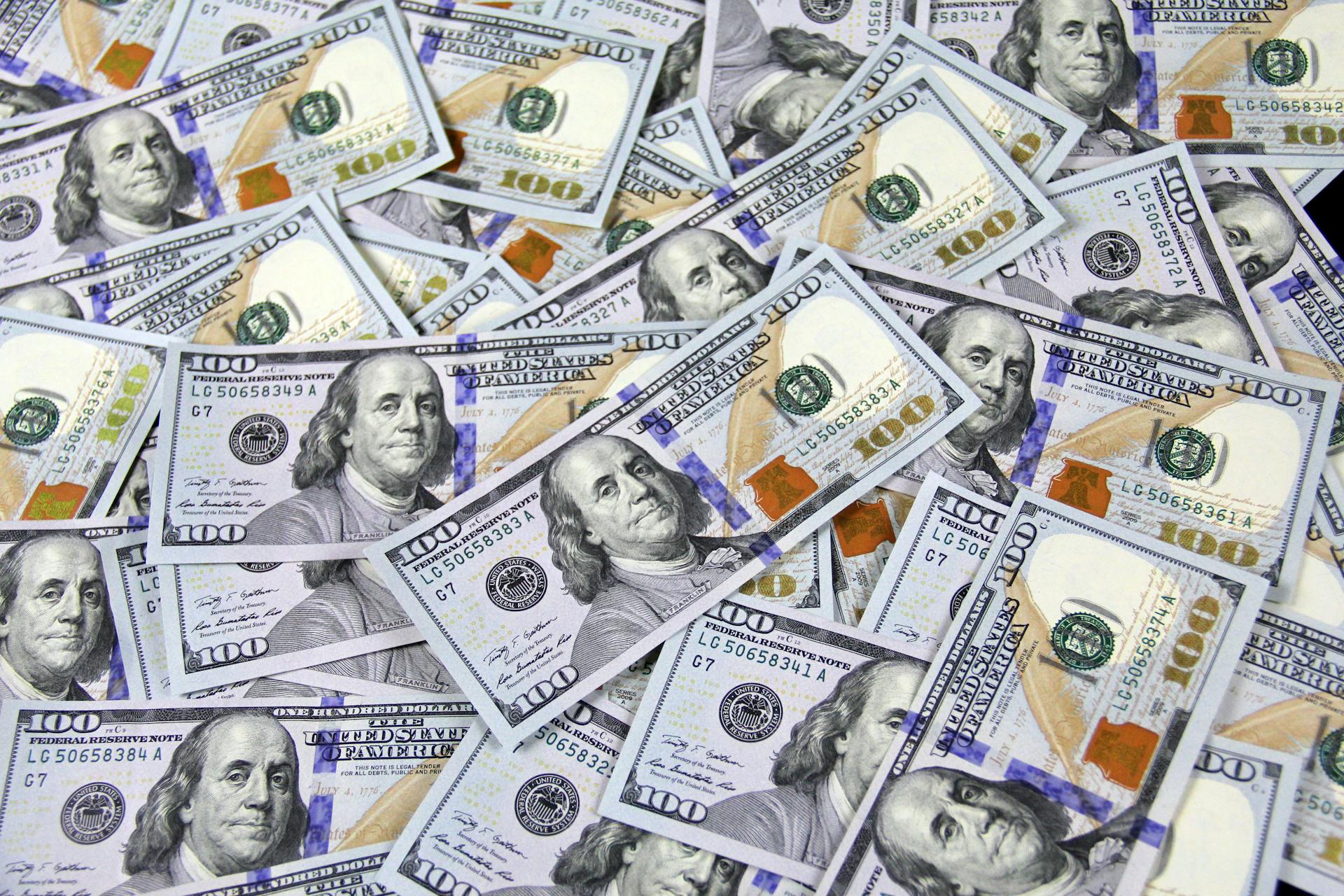
Luxembourg's official currency is the Euro, which is widely accepted in the country. The Euro is divided into 100 cents.
You can easily exchange your currency for Euros at banks, currency exchange offices, or airports in Luxembourg. Credit and debit cards are also widely accepted.
The Euro is the official currency of Luxembourg, introduced in 1999. It's widely used in everyday transactions, from buying groceries to paying for transportation.
Some popular payment methods in Luxembourg include contactless payments, online banking, and mobile payments.
Additional reading: Does France Use the Euro for Currency
Currency Forms
The Luxembourg currency has had its fair share of forms over the years. Banknotes were first issued by the Banque Internationale à Luxembourg (BIL) and the National Bank before the First World War.
The State Treasury issued its first series of notes in 1914, denominated in francs and Mark, with denominations ranging from 1 to 125 francs (or 80 Pfennig to 100 Mark). This was the last Luxembourg note to feature the German currency.
A different take: Does Canada Have Their Own Currency
In 1944, following liberation, the franc was reintroduced with a new series of notes in denominations of 5, 10, 20, 50, and 100 francs. The 5-franc notes were eventually replaced by coins in 1949, followed by the 10-franc notes in 1971 and the 20-franc notes in 1980.
Here's a breakdown of the Luxembourg franc banknotes issued between 1985 and 1996:
Coins
The first coins were issued in 1854, in denominations of 2+1⁄2, 5 and 10 centimes. This was a significant milestone in Luxembourg's currency history.
In 1901, the bronze 5- and 10-centime pieces were replaced by cupro-nickel coins. This change was likely made to improve the durability and quality of the coins.
Zinc 5-, 10- and 25-centime coins were issued by the occupying German forces in 1915–1916. This was a unique period in Luxembourg's history, marked by foreign occupation.
Iron coins were issued in the same denominations after the First World War. The use of iron as a coin material was likely a temporary solution due to the country's economic situation at the time.

Cupronickel was reintroduced in 1924, along with nickel 1- and 2-franc coins. The franc coins bore the inscription "Bon Pour", implying that they were tokens "good for" 1 or 2 francs.
In 1929, Luxembourg's first silver coins since the late 18th century were issued, 5 and 10 francs. This marked a significant return to a more traditional and valuable coin material.
The size of the 1-franc coin was reduced to match that of the Belgian 1-franc coin introduced in 1950. This change was likely made to standardize the coin's size with its Belgian counterpart.
Banknotes
Banknotes have a fascinating history in Luxembourg. The country's first banknotes were issued by the Banque Internationale à Luxembourg (BIL) and the National Bank, denominated in Thaler, Mark, and francs.
The exchange rate used on bi-currency notes was 1 franc = 80 Pfennig, although the relative gold standards would have implied a rate of 1 franc = 81 Pfennig. State Treasury notes were introduced in 1914, featuring denominations of 1, 2, 5, 25, and 125 francs (80 Pfennig, 1.6, 4, 20, and 100 Mark).
Take a look at this: Mark (currency)
The first series of State Treasury notes was the last Luxembourg notes to feature the German currency. A second series was issued in 1919, with new denominations of 50 centimes and 500 francs. The BIL issued the first of several types of 100-franc notes in 1923, which continued until the 1980s.
In 1932, the state introduced 50-franc notes, followed by 1000-franc notes in 1940. After liberation in 1944, the franc was reintroduced with a new series of notes in denominations of 5, 10, 20, 50, and 100 francs. The 5-franc notes were replaced by coins in 1949, followed by the 10-franc notes in 1971, the 20-franc notes in 1980, and the 50-franc notes in 1987.
Here's a list of Luxembourg banknotes issued between 1985 and 1996:
Transactions
Transactions in Luxembourg involve the Euro, the official currency since 1999, replacing the Luxembourgish franc.
The Euro is divided into 100 cents, making everyday transactions easy to manage.
You might enjoy: What Was the Currency in Germany before Euro
You can find ATMs and currency exchange offices throughout the country, making it convenient to access cash.
Credit and debit cards are widely accepted in Luxembourg, including at many small businesses.
Many locals prefer to use contactless payments, which are quick and efficient.
You can also use online banking services to manage your finances and make transactions.
Related reading: What Currency Is Used in Rome Italy
Sources
- https://www.xe.com/currencyconverter/convert/
- https://en.wikipedia.org/wiki/Luxembourg_franc
- https://www.monito.com/en/what-is-the-currency-in/luxembourg
- https://www.nationsencyclopedia.com/economies/Europe/Luxembourg-MONEY.html
- https://www.greysheet.com/coin-prices/series-landing/luxembourg-grand-duche-de-luxembourg
Featured Images: pexels.com


